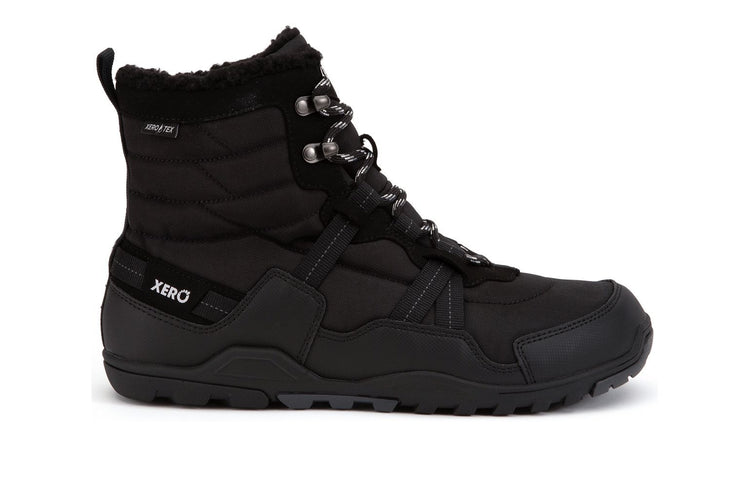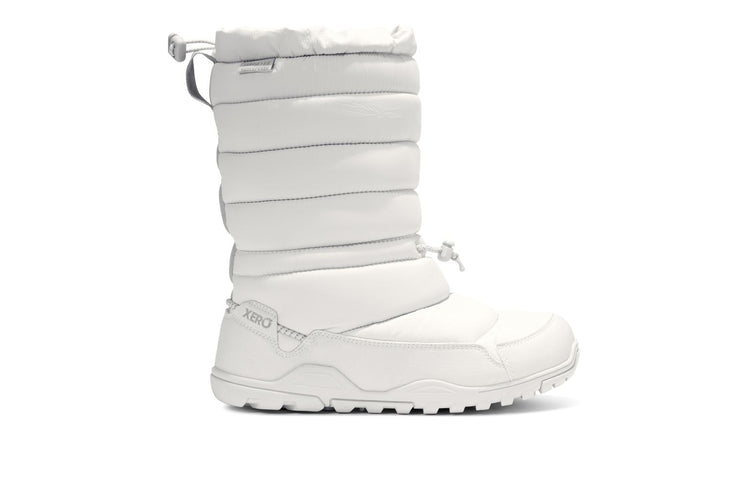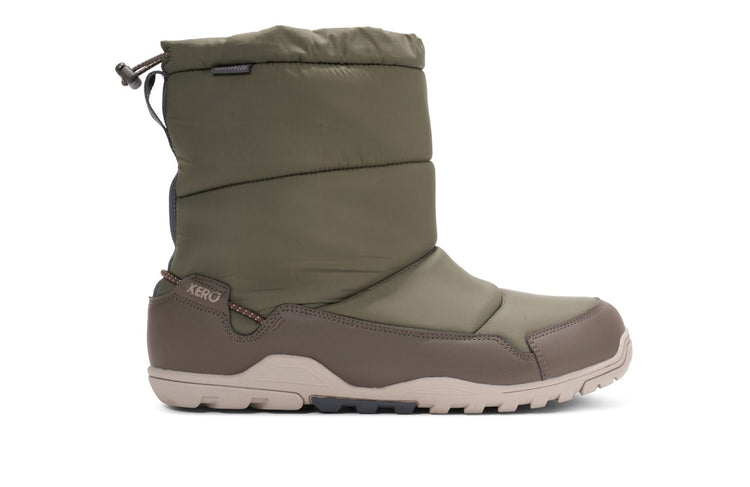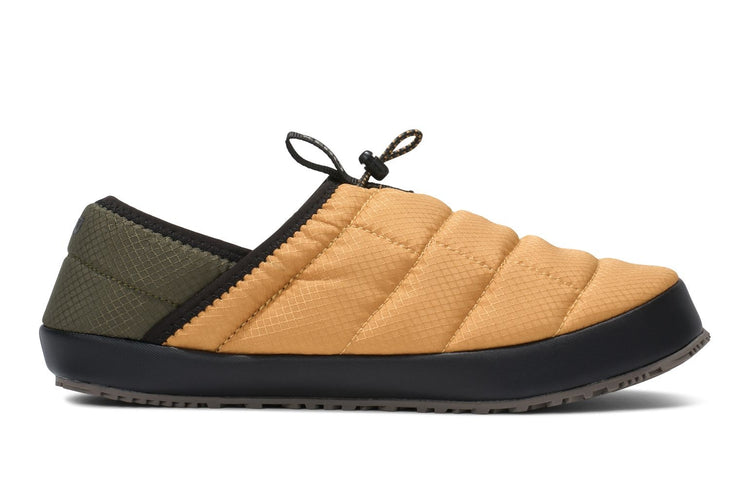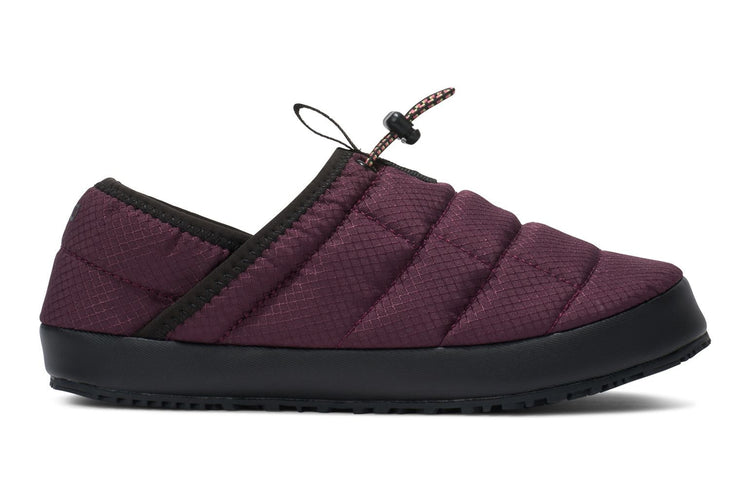latest News
What's the WORST surface for running barefoot?
When I tell people that I run barefoot (or when they see me out running without any shoes), the first response I get is: "Oh, so you run on the grass?" Or when I suggest to people that they might want to try running barefoot, the first thing they say is, "With my feet/knees/ankles/eyelashes, I'd need to run on the grass." I mean, it makes sense, right? Grass is soft. Feet are soft. Therefore, feet should be on grass. Barefoot = Grass is the common wisdom. But wisdom is rarely common, and what's common is rarely wise. Here's what I can tell you, though. And it's not just me, every accomplished barefoot runner I know will say the same thing. And all the other good coaches I know agree. In fact, what I'm about to say is SO true, that if you meet a coach who tells you otherwise, RUN AWAY (barefoot or not, I don't care) from this person as quickly as you can, because they don't know what they're talking about. Here it is: THE WORST SURFACE for learning to run barefoot is GRASS. THE WORST. ABSOLUTELY. Why? Three big reasons: BIG: Who knows what's hiding in the grass. If you can't see it, you might step on it. BIGGER: One of the principles of barefoot running is that you don't use cushioning in your shoes... well, when you run on grass, you've basically taken the cushioning out of your shoes and put it into the ground. BIGGEST: Running on grass, or any soft surface does not give you the feedback you need about your barefoot running form to help you change and improve your form. The best surface for barefoot running is NOT grass or sand or anything soft, but the smoothest and hardest surface you can find. For me, here in Boulder, Colorado, we have miles and miles of bike path. In New York City, the sidewalks are perfect! So, what makes a hard, smooth surface the best? It's the biggest reason, from above: FEEDBACK. Grass and sand and soft surfaces are too forgiving of bad form. Hard smooth surfaces tell you, with every step, whether you're using the right form. If it hurts, you're not. If you end up with blisters, you didn't. Pay close attention and each step is giving you information about how to run lighter, easier, faster, longer. I'll never forget going out on the University of Colorado sidewalks with the Boulder Barefoot Running Club. I had a blister on the ball of my left foot (more about that in another lesson). But I decided to see if I could run in such a way that I didn't hurt . At first, each step sent a shooting pain up my leg. Then I made some adjustments and I just felt the friction on the ball of my foot. By the end of the first mile, I had made some other adjustments -- using each step as an experiment -- and the next thing I knew I was picking up the pace while putting out less energy than ever. I was running faster and easier than I'd ever run without shoes... and it was painless. This would have never happened on grass. I needed the feedback of the hard surface. If you want to see a barefoot runner get a wistful look in his or her eye, mention a newly painted white line on the side of a road. Smooth, solid, cool... it's the best! ;-) Oh, and it's probably no surprise that the advantage of Xero Shoes is that when you wear those on the road, they still give you that feedback you need... but with protection from the surface.

Daniel Lieberman studies the Tarahumara running
Dr. Daniel Lieberman is one of the fathers of the barefoot running movement. His study showing how barefoot runners strike the ground with less force than shod runners, combined with Christopher McDougall's book, Born to Run, catalyzed the growth of barefoot and minimalist running. Well, it's as if Dr. Lieberman had a child with BTR, since his new study looks at how the Tarahumara run. And, more, it compares Tarahumara runners in huaraches to younger Tarahumara who run in padded running shoes. You can read the study for free here. Before I talk about what the study reveals (and what it doesn't), let me address a myth about barefoot running...Barefoot Running Myth #1One of the myths of barefoot running is that there is ONE WAY to do it: Your foot hits the ground in a certain way, you move your legs at a specific speed, you hold your arms in one configuration, and you run long, long distances. Hogwash, I say (as if I lived in the 30's). There's actually quite a bit of individual difference among competent barefoot runners, even though a few concepts are consistent. The problem with this myth is that it interferes with one of our brain's favorite hobbies, namely:The Brain's Favorite HobbyBrains like to know how things work. They like patterns. They like consistency. Oh, they're fascinated by the novel and new, but when it comes to survival, they like to know the rules. See the problem? When we want to learn something new, like how to run barefoot, we want to know "What's the one way I should do this? Show me a video I can imitate. Give me the rules." But, as I just said, there's not ONE way, there are variations of a theme.We now return to our regularly scheduled programAnd this brings us back to Lieberman's study. He finds some real variation in foot strike patterns among the huarache-wearing Tarahumara.40% primarily using midfoot strikes, 30% primarily using forefoot strikes, and 30% primarily using rearfoot strikes.70% land in a way that's consistent with the bigger picture of barefoot running, namely, don't land on your heels. But 30% DO heel strike! "How could they possibly rearfoot (or heel) strike?" you may ask. There are a couple of answers/comments: Footstrike isn't everything. Just because their heel touches the ground first, that doesn't mean they're putting extra force into their bodies by doing so. Which part of your foot touches the ground first doesn't always tell you everything you need to know. It's possible to have your heel contact the ground first but, because of your speed and where you place your foot in relationship to your center of mass, not apply force into the ground until your midfoot hits. So you could look like a heel striker, but apply force like a midfoot striker. Traditional huaraches are thick and stiff. If you haven't held a pair of huaraches made from tires and leather, you'll be in for a shock when you do. They're heavy and stiff. They reduce the amount of feedback you get from the ground... on purpose. Some of those Copper Canyon trails are seriously pointy, pokey, sticky. So it may be that some Tarahumara heel strike because they don't get the same feedback -- pain -- that one would get running barefoot. Traditional Tarahumara Huarache -- thick and stiff So don't get hung up on the fact that 30% of the Tarahumara that Lieberman studied heel strike. But also don't think, "Well, if they can do it, so can I!" More about that later. Next, Lieberman pointed out:In contrast, 75% of the conventionally shod Tarahumara primarily used rearfoot strikes, and 25% primarily used midfoot strikes.That's an interesting one: change the shoes, change the gait. I saw that when I was in Dr. Bill Sands' lab. Dr. Sands is the former head of biomechanics and engineering for the US Olympic Committee. He had hundreds of videos showing how the same runner will change their footstrike and, ofter, their entire gait, depending on the shoe they wear. That shod runners more often land on their heels isn't surprising to people familiar with barefoot running since we make the opposite argument: take OFF your shoes and your gait will change (over time and with some attention).What Lieberman's Study Does NOT SayLieberman looked at a number of other aspects of the gait of huarache-wearing and shoe-wearing Tarahumara: overstriding (the huarache wearers were less likely to do so), flexion of the joints (huarache wearers bend their joints -- use their springs -- more), and arch stiffness (huarache-wearers have stronger arches). Read the study to find out more. But what he does not say is just as important as what he does. He doesn't say "switch to sandals," or "midfoot or forefoot strike is better" or anything prescriptive. Lieberman is being especially circumspect about the meaning of the data he collected. This is, perhaps, a good thing, given how evangelical barefoot runners often take any seemingly pro-barefoot news as an excuse to have a shoe-burning party, which then backfires when any seemingly anti-barefoot news causes shod runners to chime in with "Nah-nee nah-nee, boo-boo" (or something equally insightful).Show me the moneyNote that I say "seemingly" for both pro- and con- news. That's because there still aren't any good studies that clearly demonstrate "Barefoot is better" or "barefoot is worse." And there are no studies showing "shoes are better" either, even though there has been 45+ years to whip one of those up, and many research labs are sponsored by big shoe companies. Those of us who've been living a barefoot or truly minimalist lifestyle now have lots of personal experience about the changes that can happen. And studies like Lieberman's hopefully provide more incentive for researchers find the cash to find out if we're unusual or if anyone who ditches their shoes can have the same kinds of expeiences (okay we know the answer to THAT, but you know what I mean ;-) ).The content of this post does not constitute and is not intended to be a substitute for professional medical advice, diagnosis or treatment. Always seek the advice of a physician or other qualified health provider with any questions or concerns you may have about your health or a medical condition.
Can you run long distance in sandals? You bet!
There's nothing I find funnier than when I'm running in my Xero Shoes sandals and someone asks, "Can you run in those?"Uh... you're WATCHING me run in them!Well, when I tell non-runners that some people run 100k ultramarathons in huaraches, they're incredulous.Now I don't need to explain anything, I can just show this video of the La Ruta Run, a 50k and 100k race that took place in Costa Rica. Arguably, La Ruta is the hardest trail ultramarathon in the world.Check it out... but be careful. This video will make you want to run La Ruta!Oh, and look at the 4:18 -ish mark for Jonathan Sinclair and Melissa Gosse running La Ruta in their Xero Shoes! Hear them talk about running La Ruta here.And check out the women running in their cheap plastic sandals!
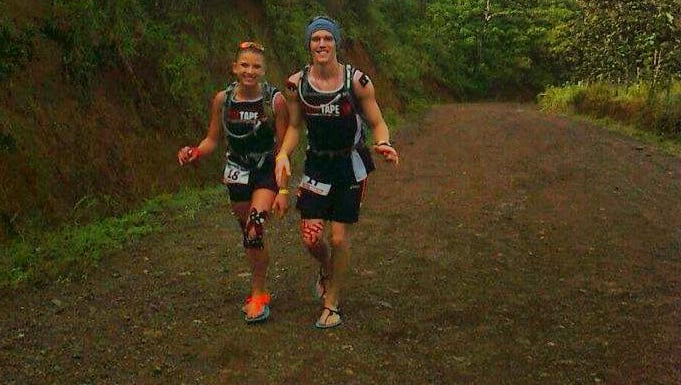
Running with the Tarahumara in Costa Rica
Want to run with the Tarahumara (the Mexican tribe featured in Chris McDougall's bestseller, Born to Run)? Well, if you can't make it to the Copper Canyon, or anywhere else for that matter, here's the next best thing. Ultra runners Jonathan Sinclair and Melissa Gosse went to Costa Rica for La Ruta 100k, arguably the hardest trail ultramarathon in the world. About a dozen Tarahumara runners were there and Jon and Mel got to spend the better part of a week hanging out and running with them -- as well as swapping huaraches and Xero Shoes, eating, drinking, and much more. They'll be sharing pictures and stories as well as giving great tips about barefoot running, minimalist running, ultramarathon training, and anything you can think to ask about. You can also click on this link to watch live video chat we had with them a few months ago.
Xero Shoes Barefoot Sandals in COLOR!
Houston, we have color! I am extremely happy and proud to announce that you can now get Xero Shoes in 4 WAY COOL colors. And to celebrate, you can also save 20% if you order by October 2nd! In addition to our Coal Black, you can now get Mocha Earth, Electric Mint, Boulder Sky, and Hot Salmon. Combine those with our different lace colors... Well, here are a few combinations that you'll see around our office: Lena in her Mocha Earth with matching brown laces and a bunch of Brass Beads. Our office ultra-runner (and customer service manager), Bill, in Electric Mint with Purple laces (he puts 80-100 miles a week on these!) Steven, taking inspiration from an 8 year old customer who was the first one to wear non-matching laces, in Boulder Sky with White laces and a Hand Pendant (on the left) and Hot Salmon with Red laces (right). These new colors come in both Connect 4mm and Contact 6mm styles. And you can get them as kits or custom-made. Click here to order your Xero Shoes Colored Barefoot Sandals
Barefoot in Asia - Regev's Review
I just realized that I have a strange history with barefoot running, barefoot walking, and minimalist shoes.First, like most of us, I spent a lot of time barefoot as a kid in the Summer. I went to a camp in the Pocono Mountains (Camp Shohola just in case any readers also went there) and whenever I had the chance, I was barefoot (made easier by the fact that I spent half of my days doing water sports). I was a competitive diver, too, so that kept me out of shoes.In junior high school and high school, I was a gymnast, so that was even more barefoot time every day.When I was 18, I went to New York City to be a street performer. I had already been doing this in Washington, DC, doing a magic act in Georgetown, and on K Street, near the White House. When I got to NYC, though, I found it much harder to get a crowd and, even worse, within a few weeks, the other street magicians had stolen all my bits! I asked one of the veteran street acts what I should do and he said, "Simple, write an act that nobody would dare steal."I pondered this for a while, until I landed on the answer. I created an act that had a bunch of crazy gymnastics in it (I did a running front flip over someone's head, stealing their hat and placing it on my head while in mid-flip), and a finale where I... wait for it... walked on broken glass in my bare feet.Now let me back up. For the gymnastics part of the act, I wore minimalist shoes. They were some old Adidas (I can't remember the name), with zero-drop, very little toe spring, not much padding. Just enough between me and the ground so I didn't kill my feet. This was in 1980-81, BTW.I loved these shoes. I bought every pair I could find. When I could no longer find them, I asked the local running shoe store what happened and he answered, "Adidas stopped selling them; they were lasting too long."I don't know if his info was accurate but, if it was, it wouldn't be the first time a company pulled a product that didn't wear out or go obsolete fast enough.Luckily, I found a company that sold shoes to prisons (you can find ANYTHING in NYC), and they had the last few pairs of these shoes... I bought them all. And they lasted through some serious abuse.Okay, back to walking barefoot on glass, though. Let's just say that it's part physics, part showmanship, and part some-hard-to-describe-thing that, if I could convince you to jump onto a 3" high pile of shattered beer bottles, you would instantly get a knowing look in your eye and say, "Ahhh... I get it now."In 5 years and thousands of shows, I only got one small cut. But by the end of the day, my feet were FILTHY from being barefoot on the street.CUT TO: Going to Asia in 1989.This is where I got hooked on being barefoot. Aside from the fact that you never wear shoes into almost any building (I was in China, Nepal, India and Thailand), there were plenty of opportunities to be barefoot outside as well. There were also plenty of times where you wanted something on your feet, but not much because it was really hot when I was there, and anything more than a sandal was way too much.When I came back from Asia, I stuck with the habit of removing my shoes whenever I went into someone's home (we've saved a fortune on carpet cleaning by not dragging dirt in from the outside).Okay, so why this long story?Simple, I was reminded of it all when Regev Elya did his review of Xero Shoes, which he took on a 7-month trip through Southeast Asia (I'm SO jealous).Of course, I think that Xero Shoes are the best minimalist shoes for a trip like that... but check out what Regev says.
4 Reasons NOT to Run Barefoot
[This post is guest-authored by our friend Rob Raux from www.shodless.com]Being barefoot and running barefoot is a blissful and consciousness-expanding endeavor. The feedback supplied from the ground is powerful enough to force even experienced runners to try it for only a mile or so, if they make it that far. Barefoot running, however wonderful, should not be subscribed to dogmatically.There are myriad resources available expounding on the benefits of being barefoot. Most of their reasons, methods, and warnings have merit. Unfortunately many of them sway to heavily towards the one-size-fits-all solution.Experiencing life unshod isn’t always the best option. Putting on a pair of huaraches or other minimalist shoes can serve a number of beneficial purposes: Technical Trail Running. Many people worry that the rocks, twigs, and roots on a trail make barefoot trail running impossible. Not true. First, you use your eyes and avoid what worries you. Second, your feet aren't rigid and can grab and grip and mold around many "obstacles."That said, while there’s nothing better than feeling the grass beneath your feet, having your heel land on an embedded rock leaves something to be desired. To be more specific, it could leave behind a bruise that will take at least a week to heal.That doesn’t include the chance of damaging the fatty tissue which protects your heel bone from impacting the ground. If any of this sounds painful, trust me, it’s worse than you’re picturing.A trail has hazards which you may not wish to risk if you're still an inexperienced barefooter. When a single false step means a week of no running, it’s just not worth it to be ideological about keeping yourself unshod. Additional mileage Your body may be able to take additional mileage, but the bottoms of your feet may not be ready to support it yet barefoot. Now, if you're looking to become a better barefoot runner, this is good news -- when your skin tells you to stop... STOP! Over time it'll adapt (not callous) and you'll be able to put in more miles.Until then, there’s nothing wrong with protecting your precious footsies, but only if you know your form is correct. If you are transitioning from shoes to barefoot and have yet to perfect the change from heel strike to mid foot strike or a forefoot strike, don’t ask for trouble by adding more miles in a minimalist shoe. You’ll find yourself injured promptly and thoroughly.If you are comfortable in your stride, you will find that your feet hit a natural point where further barefoot running may only lead to blisters (that usually means your form has broken down and you're pulling/pushing the ground, instead of placing/lifting). In these cases, adding a protective covering will give you the opportunity to add those additional miles you crave. Racing A foot covering increases your margin for error while running. Proponents of barefoot running tout the pain feedback loop as a beneficial aspect. Any foot covering blocks the pain receptors, which allow you to cause more damage to your body.In a race, this can be a necessary evil. A reduced pain feedback loop allows you to run a longer duration of more intensity. The covering may also absorb some of the mistakes you may have made barefoot (stepping on that rock in your mental fatigue).There’s obviously a very fine line to be ridden here, and one that you can certainly go too far with. Go with the least amount of covering possible and you should be able to dampen and absorb just the minimal amount of error to improve your results.I'd love to say, "If you're not comfortable running that distance, don't race that distance." But I know how some of us... I mean, YOU... can be ;-) The bitter cold Mother nature yields to no man. Don’t even think about getting the best of father winter.If you live in a climate that has a true winter, you know what frostbite feels like. Now try running barefoot.Amazingly, there are folks who do it, and enjoy it. And check out Steven shoveling snow in his huaraches. Frankly, I’ve tried it and even I think that’s crazy. Most people are going to need something to keep their feet protected from the elements (wind, snow, slush, etc.). Each person has a different tolerance, which will adapt as they get more comfortable with the colder weather.When dealing with the elements it’s best to be safer than pull up limp 3 miles from your house and walk the rest of the way home. The content of this post does not constitute and is not intended to be a substitute for professional medical advice, diagnosis or treatment. Always seek the advice of a physician or other qualified health provider with any questions or concerns you may have about your health or a medical condition.
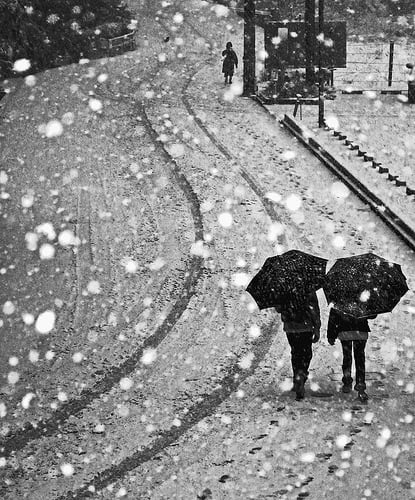
Barefoot in the Cold
Here in the Northern Hemisphere, Winter is upon us. And people email me every day asking what to do if they want to be barefoot or minimalist in the cold weather. While I've written about running barefoot in the cold before, this is a whole new thing ;-)First let me say: DO NOT TRY THIS AT HOME. In other words, don't go out and try to imitate me.I've been barefoot running for over 2 and a half years, and haven't worn a pair of real shoes for more than a total of 3 days in that time.Last winter, I thought, "I'll keep my barefoot shoes on until it seems too cold." And the next thing I knew, it was Spring!So, clearly I've acclimated. And that's not too surprising. Humans (and our hominid cousins) lived in cold climates without shoes for a LOOOONG time. So, we're kinda wired for it, if we give ourselves time to adapt.Here's the video I just shot, after we got 18"+ of snow in Boulder. It's about 15 degrees out.What I did is this: Outside for about 10 minutes Inside to dry off my feet and warm them for 5 Outside for another 10 Inside to dry and warm for about 3 Outside for 30+ minutes... by this time my body temp had gone way up. I was sweating quite a bit. And my feet felt totally warm. Not numb. Warm. When I got inside after finishing the shoveling, they didn't have to thaw or warm up or anything. Lena wants me point out that you should check the Wiki about frostbite so you don't do something stupid and get hurt ;-)The content of this post does not constitute and is not intended to be a substitute for professional medical advice, diagnosis or treatment. Always seek the advice of a physician or other qualified health provider with any questions or concerns you may have about your health or a medical condition.
The little lie of barefoot running
As the barefoot running boom continues to explode, it’s important that we debunk the mythology that’s sprung up and face some facts. And perhaps the most obvious fact is this: If you run with anything between your skin and the ground, you are not barefoot runner. Let me say that again. If you wear Vibram Fivefingers, New Balance Minimus, Merrell Trail Gloves, Altra Adams, Vivobarefoot shoes, Newtons, Inov8 shoes, even our Invisible Shoes huaraches running sandals, you are not a barefoot runner. I don’t care if your previous shoes were padded stilts and your new shoes are a “zero-drop” natural movement minimalist shoe, if you’ve got something on your feet you’re not barefoot running. Barefoot running means that you run in bare feet. Period. Now, don’t get me wrong, I’m not saying that if you’ve just spent $125 on your Vibram Bikilas you need to throw them away, or that if there’s a barefoot running Meetup you can’t be part of the cool clique. And I’m not saying everyone needs to be barefoot. And, clearly, I'm not saying "don't buy Xero Shoes" ;-) But it’s important that we differentiate actual barefoot running from minimalist running. Why? Because more often than some would like to admit, barefoot running and minimalist running do not produce the same results. The promise of barefoot running is that the sensations you get when your skin contacts the ground — often known as pain — teach you proper running form. That is, if you change your form to make the pain go away, you’ll have a more efficient, lighter, easier stride, and you’ll be able to run pain-free for life. Anything that you put on your feet reduces the amount of sensation you feel and can interfere with the feedback loop that barefoot running gives which produces those benefits. Again, I’m not saying that you don’t get feedback from minimalist shoes. You certainly get more than you do when you’ve got 2″ of padding in your Nike I Can’t Feel The Grounds. As the developer of Xero Shoes, I know hundreds of people who switched to our sandals, improved their barefoot running form, eliminated life-long aches and pains, and now enjoy running ultra-marathons. As one of our early customers put it, "Xero Shoes are just like being barefoot... if they covered the world in a thin layer of comfortable rubber." But, I’ve also met a LOT people who bought a pair of Vibrams or Merrells (or any other minimalist shoe), soon became injured, and now tell everyone they know that “barefoot running” is dangerous… and they’ve never run barefoot! I’ve been on a number of barefoot running panel discussions and, inevitably, there will be some number of doctors, physical therapists, podiatrists and other medical professionals who say, smugly, “Hey, stick with this barefoot running thing. All the people getting hurt by doing it are putting my kids through college!” Before they can finish chuckling, I fire back: Me: “You know, of course, that all you guys made the exact same joke 40 years ago when running shoes were invented, right? And you know that people who have no problems running barefoot — and ones who get cured of injuries by running barefoot — will not come to see you, right?” Them: “Uh…” Then I pull out the bigger guns: “And when a patient tells you they got hurt from barefoot running, did you ask if they were actually in bare feet? Did you check to see if they simply over-trained by doing too much, too soon? And, maybe most importantly, did you take a video of them running so you could analyze their form and see if they were simply using the same injury-producing mechanics they used when they wore shoes? Or did you see if they were trying to stay on their toes, putting extra strain on their calves and Achilles, because they have a mistaken ideas about proper barefoot form?” Them: “Uh…” Barefoot running is more than switching to a minimalist shoe. And it’s more than simply removing your shoes. Don’t believe me? Go to a barefoot running event, find the people in their minimalist shoes, and see which ones are still landing on their heels, as if they’re still in motion controlled running shoes. In fact, be on the lookout for runners who are actually barefoot doing the same thing! Some of us are either unable to feel those important form-changing sensations, or unable (without coaching) to actually make form changes in order to find a painless way of moving. For an example of this, check out Pete Larson's video of the recent NYC Barefoot Run. Most of the VFF wearers, and a handful of barefoot runners are still landing on their heels. (I was there and noticed the same thing, but I didn't have the brains to video tape it... so, Thanks, Pete!) Let’s wrap this up with a wish: If you’re one of those “barefoot” runners who has never run barefoot, I can’t encourage you enough to try it. Don’t think there’s some transition you need to go through before you’re “ready.” Ironically, the best advice I can give you is: Just Do It! Get on a good clean hard surface (a bike path is great, streets work too) and go for a run. Listen to your feet, if they hurt, try to move in some different way so that they don’t. And if you can’t figure out how, then stop and try again another day. Don’t think you need to build up callouses; none of us who successfully run barefoot have any (they’re another sign that you’re doing something wrong). If you can find a coach or some training, get some guidance. Report back here with what you discover. The goal is not to be barefoot all the time. The goal is to be flexible. To be able to run comfortably, easily, and enjoyably under any circumstance. To know when barefoot is the best option and when something under your feet is called for. I wear my Xero Shoes for all my walking, hiking, and getting into restaurants. I'm barefoot for a lot of my sprinting training. But, hey, I still wear running shoes, too… when I have to shovel a 2′ Colorado snowfall. The content of this post does not constitute and is not intended to be a substitute for professional medical advice, diagnosis or treatment. Always seek the advice of a physician or other qualified health provider with any questions or concerns you may have about your health or a medical condition.
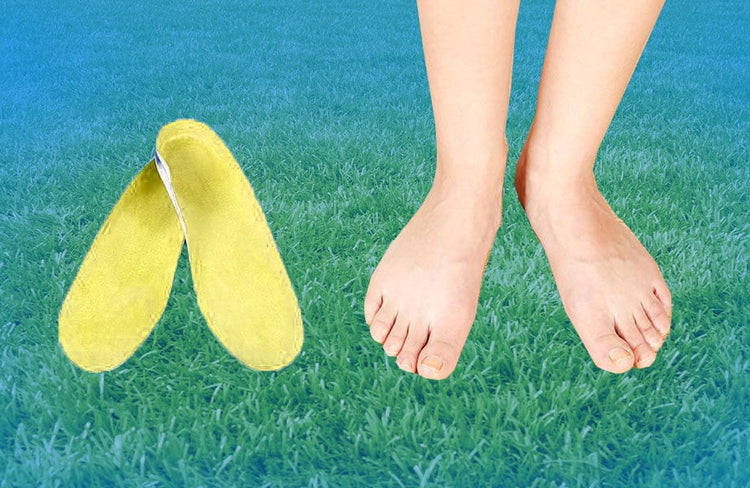
Orthotics vs. Barefoot Running
The only time I've worn anything other than my huaraches or my sprinting spikes in the last 16 months has been the 3 times I put on my old running shoes... so I could shovel snow. Those shoes have my $200 orthotics in them. And each time I've put them on, I have the same thought, "Geez, my foot can't even move. How did I wear these?" Often, when I'm out and about, someone will see my Xero Shoes and say, "Those look great, but I can't wear them. I need orthotics." "I used to think the same thing," I reply. "But let me ask you something. When has putting a cast on a limb and immobilizing it made it stronger?" "Well... never," they say, not wanting to admit the obvious fatal flaw in their reasoning. "Right. So you put a cast on your foot, called an orthotic, it gets weaker. Then you need a new cast to handle how much weaker you've gotten, and then... Oh, by the way," I mention, "you had your orthotic made while you were standing on a flat surface, didn't you?" "Yes." "Look at the shape of your shoe. Is it flat?" "Uh... no." "Because of how the shape of the shoe influences the way you move, you really need a different orthotic for each shoe. And it needs to be fitted based on how you move in that shoe, not how you stand, motionless, on the ground." "Hmmm..." I can see the glimmer of realization in their eyes. Well, now I have new ammunition in my anti-orthotic holster, an article in the New York Times by one of my favorite science writers, Gina Kolata: Close Look at Orthotics Raises a Welter of Doubts Let me give you a few highlights: Shoe inserts or orthotics may be helpful as a short-term solution, preventing injuries in some athletes. But it is not clear how to make inserts that work. The idea that they are supposed to correct mechanical-alignment problems does not hold up. Kinda sums it up, yes? Just wait, there's more. Gina interviews the top orthotics researcher, Benno M. Nigg, who says this about a man named Jason's flat feet: There is no need to “correct” a flat foot. All Jason needs to do is strengthen his foot and ankle muscles and then try running. without orthotics. Who knew? ;-) Well, *I* did... I've had really flat feet my whole life... until I started running and walking barefoot. Now I have some arch in my foot. BTW, I'm legally required to say that barefoot running shoes and sandals are not a medical treatment, I'm not a doctor, nor am I able to promise that by going without shoes you will develop arches in your feet. That said, do some Googling and you'll hear a lot of similar stories. Do with that what you will. Sometimes people with high arches give me the same story. "I need support because my arches are so high." Just because they're high, doesn't mean they're strong, especially if you've been supporting them all your life... remember the cast analogy. Now I'm not going to say that orthotics don't do something. But the question is: What do they do? How do they do it? And are they really helping? Dr. Joseph Hamill responds, in Gina's article: I guess the main thing to note is that, as biomechanists, we really do not know how orthotics work. Results from his studies cause Dr. Nigg to add: There was no way to predict the effect of a given orthotic. Hey, I'm not here to make anyone throw away their high-priced foot supports even though I haven't worn mine since 2009. But I am here to inspire a bit of wondering, a bit of curiosity, a bit of common sense, and a bit of critical thinking. Man lived without orthotics for a LOOOONG time. That doesn't mean they couldn't have benefited from them. But it means they got along without them. Maybe you can too. It doesn't cost much -- in time or dollars -- to set up an experiment for one. The content of this post does not constitute and is not intended to be a substitute for professional medical advice, diagnosis or treatment. Always seek the advice of a physician or other qualified health provider with any questions or concerns you may have about your health or a medical condition.
Long distance running in huaraches
About once a week I get a call or an email from someone who asks, "Can you run in Xero Shoes for long runs?"I usually point out to them that the Tarahumara are known for running ultra-marathons in huaraches, so, Yes.But some people respond, "Sure, but I'm not a Tarahumara Indian."True (but not necessarily relevant).So, how bout a hometown boy who just ran in his Xero Shoes huaraches... for SIXTY-EIGHT MILES!Read the rest of the thread about his run in the archive of the Runners World Barefoot Running forum
Another way to tie huaraches Tarahumara running sandals
Raymond Mack devised a "thong-style" method of tying huaraches running sandals. I haven't tried out the tying method yet, but this video makes me want to go to the beach ;-)

